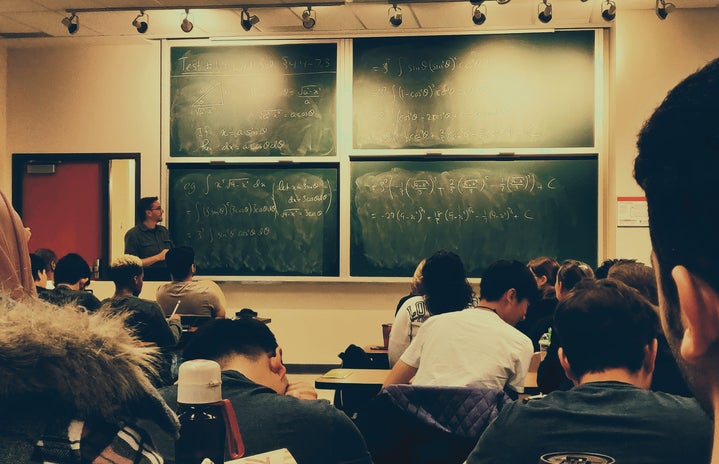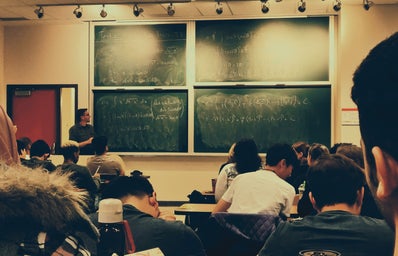The coronavirus affected the life of everyone around the world, and not being able to live together as a society by sharing the biggest part of life among others, was definitely the hardest part of living without going outside. When it comes to contact with others to sustain a basic form of communication and socialization, teaching during those times is one of the hardest activities to do.
Due to Covid-19, in 2020 schools have been closed worldwide. In that scenario, most of those institutions weren’t prepared to host online classes with the best resources for the students that, in some cases, were also harmed by their own households. Some didn’t have the best wi-fi or enough equipment to share with others house members that needed it too, other kids simply couldn’t deal with the distance from their friends, teachers and the environment of school – this whole conjecture was a challenge for educators in general. So how did those professionals managed to keep the teaching alive, healthy and productive for the students and also for them during pandemic?
The race for adaptation
For Paula Fernandes, a portuguese teacher in Red House School, in São Paulo, Brazil, most part of the challenge was centered in the adaptation of her whole house – and life – to support the new routine of classes held online, and to also guarantee the best job she could’ve done “I had to buy a bigger package of wi-fi, new equipment and new materials from my own money – I even considered getting a new computer, just to be sure my students could see me completely and don’t compromise their attention to the classes, because I have an old one that works really well, except for the old camera”, she confessed. Paula also thanked her particular technician: “Thank God I had my boyfriend during those times! He works with technology and helps me with problems such as the wi-fi suddenly stop working or my computer totally giving up during Zoom Classes.”
However, the challenges are worsen when it comes about a school that wasn’t used to online support for most of its services. Neila Fernandes is coordinator of Elementary and High School in Jesus Maria José School in São Paulo. She talked about how the Covid-19 crisis influenced on the management of the institution “We had very little time to adapt the classes and learning the things we didn’t know. The process was all about testing, talking and paying attention to the ideas that worked best for us.” Neila also pointed “We had to test specially what worked best for the students to enjoy the classes and effectively learn from their houses.”
Nevertheless, the contact with the families were tough too. For Paula, the judgment feeling made her work really stressing “Knowing that the parents were in the same room as my students noticing and paying attention to the way I was managing my classes, talking to their childs and passing homework was really hard. I had a lot of problems until I got used to it.” On the other hand, Neila said that the dialogue with the families were the strength that made the long-distance teaching easier “We’ve seen the necessity of getting closer to the families because they came to us asking for help to assist the kids. It happened especially because they started keeping up directly with the classes – a movement that didn’t happen before pandemic.”
Neila also emphasized the need of both teachers and parents helping themselves with long-distance acquired terms “we needed help from the families to organize a routine and support the kids in classes, in order to discover the best way to increase the knowledge of the children.” As a result of this partnership, Neila said that the parents became more participants in the classes watching, learning, listening and even getting to know their kid’s teachers “It was great!”
For those parents who insisting on giving too much opinion in the school’s job, Neila relievedly said: “We had just a few cases, so it didn’t even bother us at all.” However, the coordinator said that they talked a lot with the families and gave them several opportunities to suggest, question and describe their insecurities, so that they could transform the virtual classroom environment into a better and more functional place.
Back to school almost as it was before
Between the last months of 2020 and the first of 2021, the cases of coronavirus in Brazil started decreasing and, for that reason, some schools started preparing themselves to receive the students back in presence classes: a new challenge for the teachers. How did these professionals managed to do it all over again: the adaptation, the routine and, most importantly, the mix of online and virtual classes?
For Paula, it was another great challenge in her life as a teacher: “Thinking about activities that fit both the children who were at school in person and those who were in virtual classes was challenging.” The teacher also said that making sure everyone was listening and paying attention in the class has been very difficult. However, Paula complemented that “things are better now because I’ve been doing it for several months, but I can’t wait for things to get better and get back to normal again.”
According to Neila, the changes provided by online classes come to stay “I do believe the school has passed through 50 years in one!”, she exclaimed, “we’ve learned a lot about the influence of technology in our lives.” The coordinator thinks that even when life returns to normal, the new equipment and the new routine will still be part of education. “For example, the attendance of online parents meeting have increased a lot during quarantine, mainly because the parents’ displacement to the school is no longer a problem”, she told. Neila also complemented that this situation is only a reality due to all the great professionals that were available: “they were an important part of the process and were also very helpful for the teachers, students and especially to us: educators.”
Race against time for education
Nevertheless, it’s important to consider the inequality of Brazil – especially when it comes about education. Both Paula and Neila are cases of educators that, even in the context of privilege, support and structure, needed hard work to adapt to this scenario. Still, most of Brazilian population depends on public education – not only to grow as literate, critical thinkers, but even to survive. In addition to that, most kids in poverty depended on the lunch served in public schools to guarantee the only meal they get every day. According to G1 newspaper resources, in 2018 over 10 million people were no longer able to guarantee basic nourishment in their houses. With the pandemic, this number got even higher, and there was an increase in the unemployment scenario due to the prohibition of people to leave their houses to work.
Similarly for both teachers, the solution to this chaos is the investment in education from the government, that must be a priority. As Neila said “unfortunately, the ones that need it the most in our country are the ones whose got less. The government isn’t able to attend to the needs of public institutions like we did with our school, families and teachers. The investment in education should’ve been a priority a long time ago in Brazil, and we wouldn’t have been in this chaos of inequality and disorganization”. For her, the biggest step into solving the pandemic crisis is, still, choosing education over anything else “the government must look at education as a political priority.”
————————————————————-
The article above was edited by Nicole Leslie.
Liked this type of content? Check Her Campus Casper Libero home page for more!


